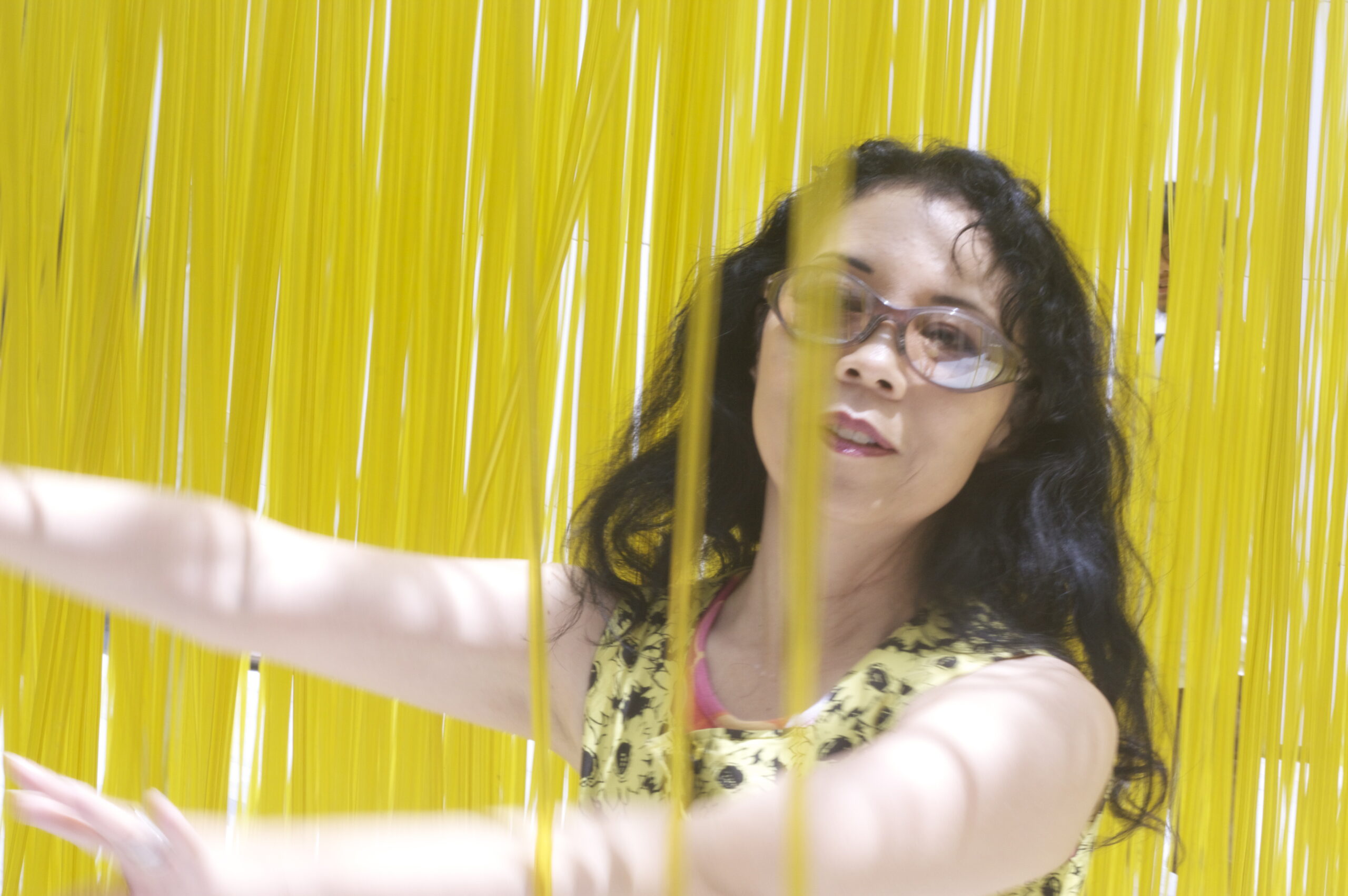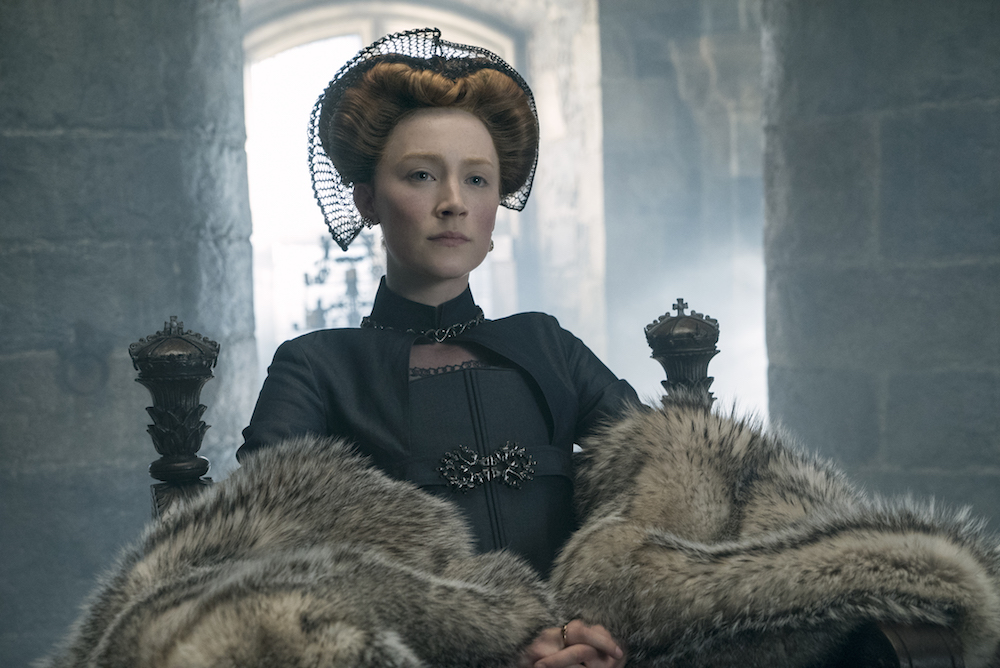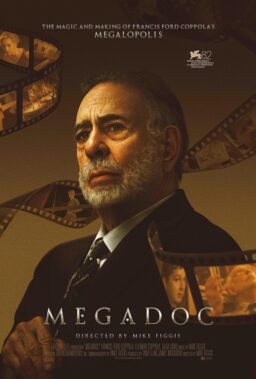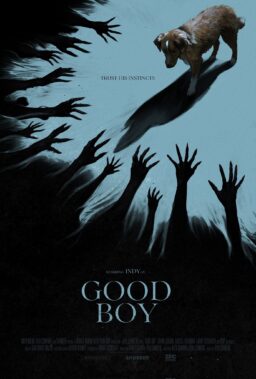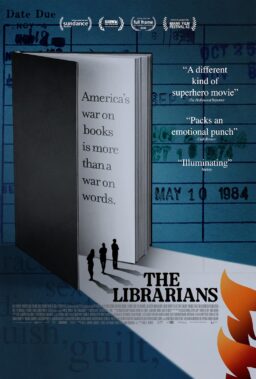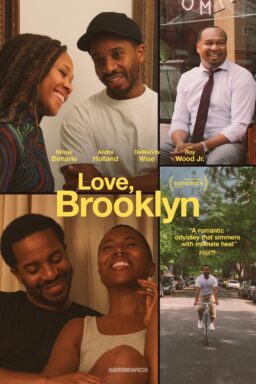The tale of the ill-fated queen of Scotland is really the story of two queens—Mary and Elizabeth, cousins of different religions. “Mary Queen of Scots,” which made its world premiere as the closing gala of AFI FEST 2018. It’s an imperfect film with fine performances by Ronan and Robbie as sister queens but also enemies because “a queen has no sisters, only country.”
Director Josie Rourke’s take follows some of the conceits of the 1971 movie of the same name, but also gives us this era’s sensibilities of inclusiveness and feminism. “Mary Queen of Scots” in 2018 has black (Adrian Lester and Kadiff Kirwan) and Asian faces (Gemma Chan) in the Elizabethan courts and appears to show marital rape. Yet perhaps the film’s greatest weakness is falling back on traditional male views of conflict.
Rourke is best known as the Artistic Director of Donmar Warehouse (Tom Hiddleston’s “Coriolanus“). Several of her productions have been made into National Theatre Live broadcasts. In her debut film, she takes full advantage of the freedom from the confines of a stage. Long shots of Scotland serve as transitions between battles, both physical and political. Scotland is claustrophobic, shot in dark rooms with a semblance of natural light although often one wishes a fill light had been used on the faces. In contrast, England has an airier feel.
In her introductory remarks, Rourke noted that the Elizabethan era was a time that people thought woman leaders was “against nature, against God.” For not just Mary, but for Elizabeth, it was “incredibly hard to find their integrity and their hearts.”
If you’re not up on British history, there were two Queen Marys in Queen Elizabeth I’s life—her older half-sister Mary Tudor (1516-1558) and her cousin, Mary Stuart. Mary Queen of Scots was related to the Tudors through her grandmother, Margaret, who was Henry VIII’s older sister. Margaret married King James IV of Scotland. Margaret would be widowed in 1503 and marry Archibald Douglas, 6th Earl of Angus. She would marry a third time (Henry Stewart, the first Lord Methven), but through her second marriage, she would be the grandmother of Lord Darnley, Mary Queen of Scots’ second husband. With James IV, Margaret only had one child who survived infancy, James V, the father of Mary Queen of Scots. Mary became queen when she was six days old. Elizabeth was about nine years older.
Queen Elizabeth was the only surviving child of Henry VIII’s second wife, Anne Boleyn, for whom he broke with the Catholic Church (to divorce his first wife, Catherine of Aragon). Anne was beheaded having been charged with adultery, witchcraft and treason.
Regents (including her mother, Mary of Guise) would rule for Mary while she would be educated and married in France, but her first marriage, to the Dauphin of France, would be short-lived. Her husband became King Francis II in 1559 and was dead by December 1560. The now widowed Mary returned to Scotland in August of 1561. By 1565, she was married to Henry Stuart and in 1566, she would have a son, James. Henry Stuart would be murdered in 1567, leaving Mary widowed again. Within a month, she would be married to James Hepburn, 4th Earl of Bothwell. By 1567, she would abdicate and her son would become king. She then sought sanctuary in England. After a little over 18 years under Elizabeth’s custody, she would be found guilty of plotting to assassinate Queen Elizabeth I and beheaded in 1587.
“Mary Queen of Scots” begins at the end. The still beautiful Mary (Saoirse Ronan) is first praying and then escorted to the chamber where she will lose her head. Underneath her somber black robes, she’s wearing red, symbolic of being martyred. Her death won’t be a swift because it took three swings of the executioner’s weapon to detach her head, but “Mary Queen of Scots” mercifully doesn’t take us there.

Beau Willimon’s (“House of Cards”) script, which is based on John Guy’s book Queen of Scots: The True Life of Mary Stuart, flashes back to the day Mary returns to Scotland. The landing requires the ladies and the queen to wade through the cold waters to the shore in their cumbersome long skirts. Once safely at the castle, Mary finds herself less than welcome. Her half-brother, James Stewart, Earl of Moray (James McArdle)—the illegitimate son of her father who was almost a decade older than Mary, had been satisfied ruling in her stead. Despite her tolerance of her predominately Protestant subjects, the Catholic Mary is bitterly opposed by John Knox, the founder of the Presbyterian Church of Scotland (David Tennant).
The matter of marriage concerns not only Mary and her court, but also her cousin Queen Elizabeth (Margot Robbie). Elizabeth plots to gain control of Mary through her favorite, recently widowed Robert Dudley (Joe Alwyn), and offers him as a suitable second husband, but the capricious Mary falls for her cousin Lord Darnley (Jack Lowden). Darnley is a seducer of both men and women and this script has him sleeping with Mary’s private secretary, the Italian David Rizzio (Ismael Cruz Cordova). It’s Mary’s determination to produce an heir that results in first her forceful seduction and then what could be interpreted as marital rape as Darnley becomes the aggressor. Darnley wishes to be both husband and king of the castle, but he also is weak-willed. He allows his brother-in-law James Stewart and his cohorts to convince him that Rizzio should be murdered—in his wife’s presence. Mary at first defends Rizzio and then fearfully cowers after Rizzio has been stabbed, but the stabbing continues.
Rourke captures the vulnerability of this queen, a woman amongst brutal warriors. She may lead them in battle, but she is no match for them with only her birthright as a flimsy shield. With the death of Rizzio, the cowardice and rationalization of Darnley’s murder is established and the end of Mary’s time in Scotland is inevitable.
Her next husband, Bothwell, abducts her and rapes her to force her into marriage. Willimon’s script strips the romance from the marriages of this tragic queen and Rourke tastefully, but clearly presents the physical violations against this young and beautiful queen. Yet her marriages cannot shield her from religious radicals. Knox rails against her. She is not a queen; she is a whore. Some things haven’t changed.
In the 1971 movie “Mary, Queen of Scots,” Vanessa Redgrave played the title character and faced off against Glenda Jackson’s Elizabeth I. The screenplay (by John Hale) had the two cousins meet twice and suggests there was a homosexual liaison between David Riccio (Ian Holm) and Mary Stuart’s second husband, Henry Stuart, Lord Darnley (Timothy Dalton).
With Willimon’s script and under Rourke’s direction, the new version of “Mary Queen of Scots” is more emphatic about this homosexual connection, but not explicit. Willimon’s script also can’t resist the meeting of these two queens, something that didn’t happen in real life.
Elizabeth, now pock-marked and be-wigged, faces the still defiant Mary, whose long red hair hangs in a simple braid down her back, and Elizabeth declares that in her beauty, her marriages and her motherhood, “you’ve surpassed me in every way” but “your gifts are your downfall.”
Mary places her faith in Elizabeth who swears she will be safe in England, but we know this won’t be true. The script builds toward this confrontation instead of drawing upon the psychological horror of the unseen and unknown. Earlier in the film, Elizabeth has declared herself a “man,” but she still is plagued by the need for male admiration though she finds men cruel. Yet visually, we see Elizabeth becoming increasingly a caricature of a queen, white-faced with an increasingly elaborate red wig. She is the slightly toned down version of Helena Bonham Carter’s Red Queen in the 2010 “Alice in Wonderland.”
At the time of Mary’s execution (1587) at 44, Elizabeth was 54 and her favorite, Robert Dudley, had married again (1578), this time to Anne Boleyn’s grandniece, the widow Lettice Knollys. Elizabeth would never forgive either.
